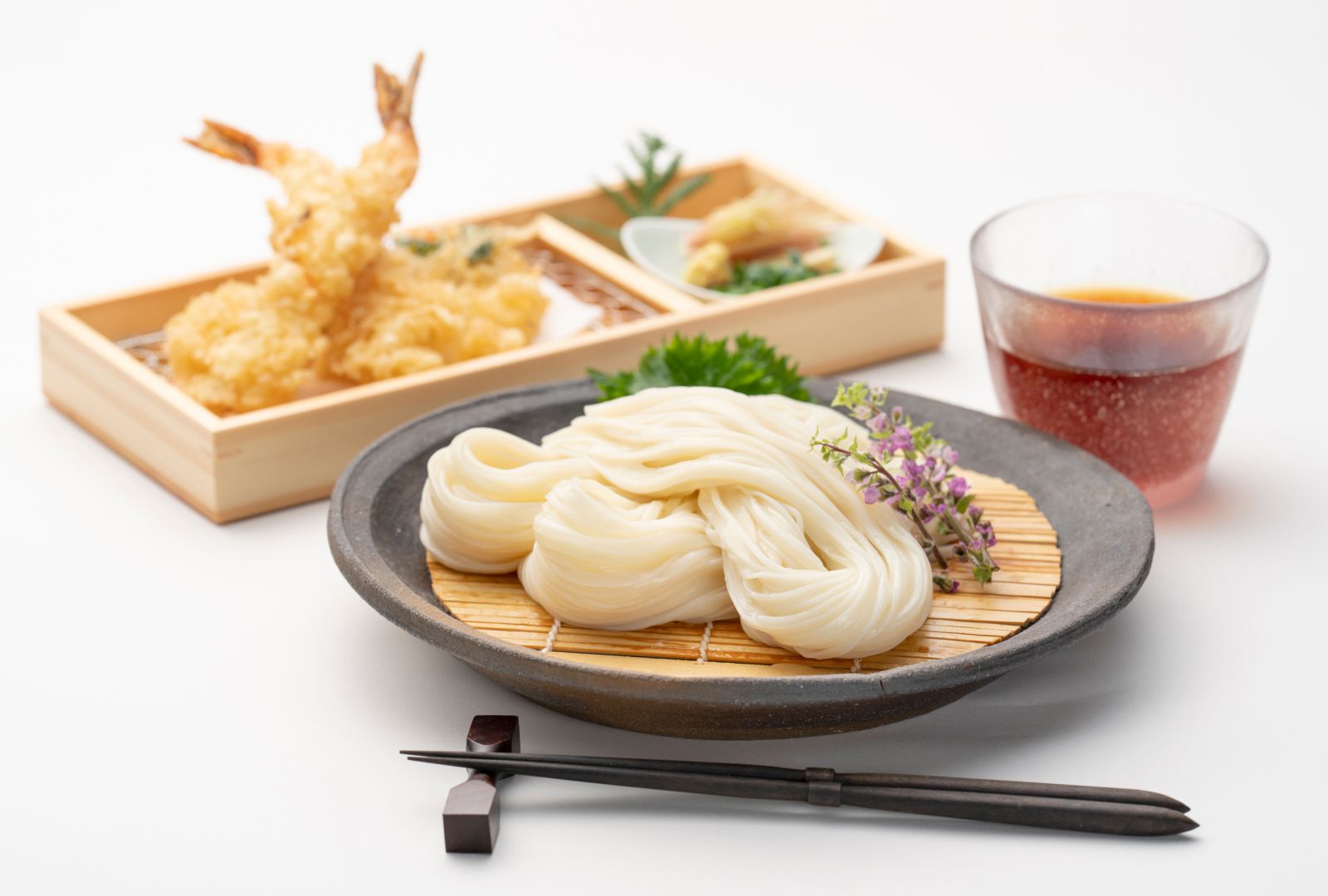INANIWA UDON OGAWA
COMMITMENT

Inaniwa Udon brings delicious surprises and fun conversations to your meals,
creating a joyful experience in your daily life.
What is Inaniwa Udon?
Using traditional ingredients from Akita, Japanbr
Our Inaniwa Udon has 400 years of history
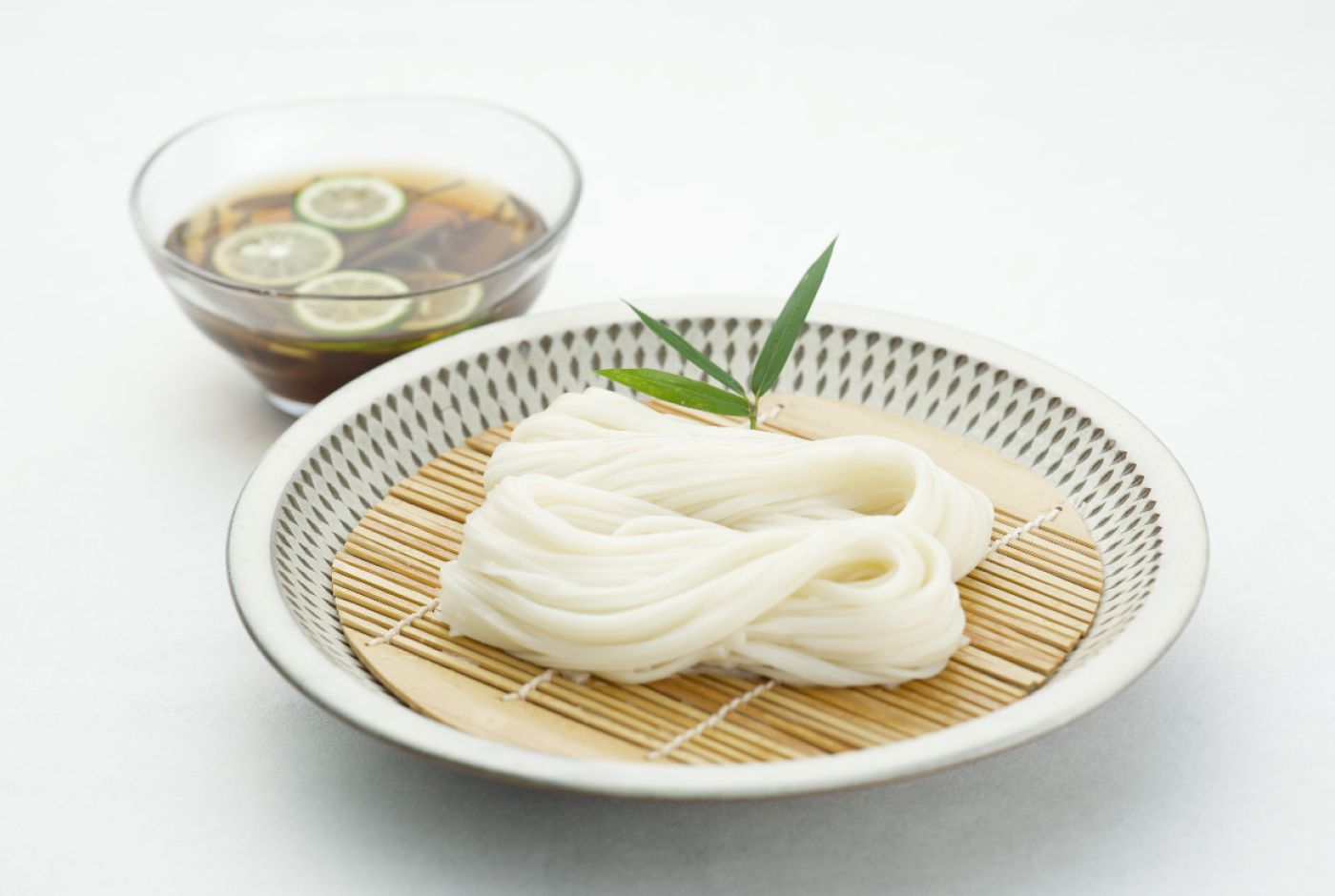
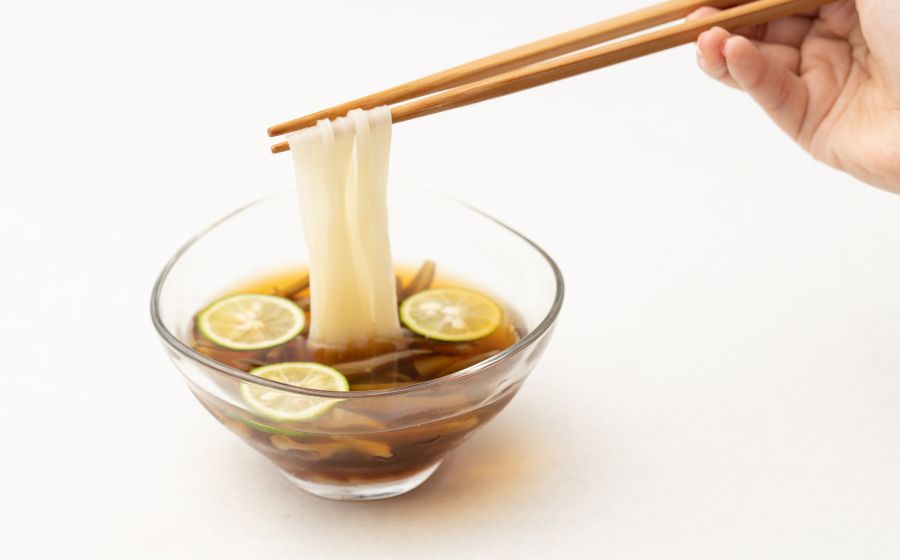
With nearly 400 years of history, Inaniwa Udon is said to have been founded by Ichibei Sato, who lived in Akita’s Inaniwa district and made dried udon using flour from locally grown wheat. Inaniwa Udon has been praised for hundreds of years by Japanese gourmands for its smooth and silky texture. Inaniwa Udon was so highly regarded that it was regularly presented to “Daimyo,” Japanese lords, as a gift.
Passed down by generations, Inaniwa Udon is considered one of ‘Three Great’ or ‘Three Famous’ udon recipes in Japan, sometimes being referred to a culinary masterpiece of Japan.
5 Principles of Ogawa Udon
- Use only good quality ingredients with no additives.
- Use special techniques (kneading, crushing, ayakake) requiring high levels of craftsmanship to aerate the dough.
- Prepare the noodles carefully over the course of 4 days.
- Use a special drying technique that makes noodles as white a fresh snow.
- Maintain strict quality control by certifying all factories with JAS (Japan Agricultural Standards)
Ingredients
Ingredients are kept simple, only flour, water, and salt.
This simple recipe brings out the natural quality of the ingredients.
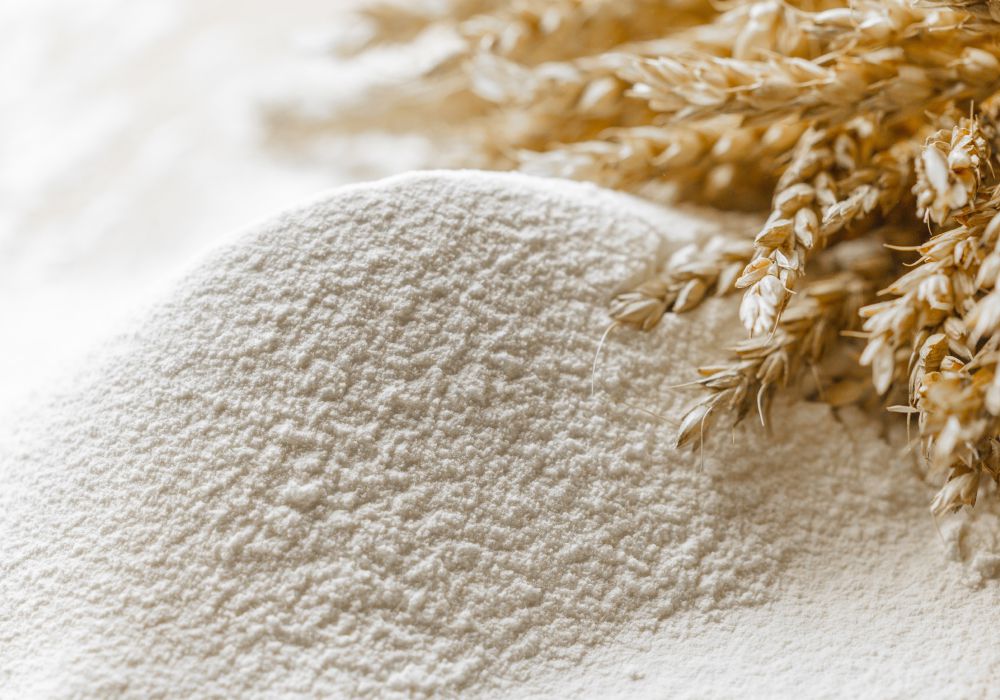
- Flour
- We make the flour for our noodles by blending a carefully selected mixture of dozens of varieties of flour. This unique blend is specially designed for handmade udon.Good flour starts with good wheat, because choosing the right wheat has a big impact on the scent, texture, and flavor of the final product. To ensure quality, our Chairman Nobuo Ogawa goes to Hokkaido to select the best 100% domestic grown wheat. We use Hokkaido wheat because it produces noodles with a uniquely rich flavor and soft texture.
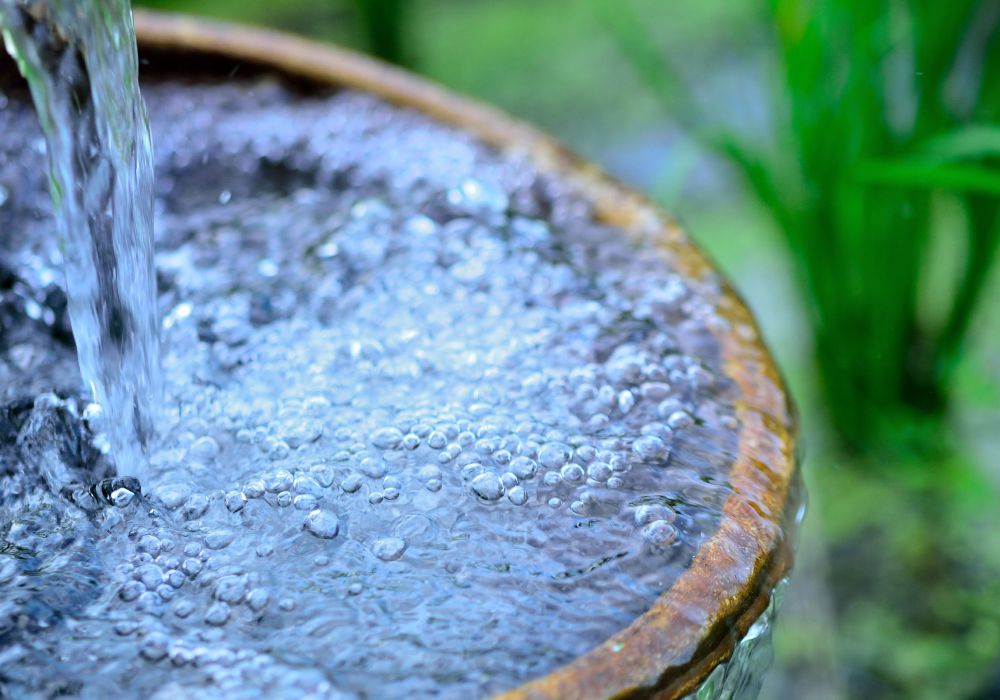
- Water
- We use spring water which runs from the Kurikoma Mountains and the Akita Sugibayashi Forest in Omoriyama.This balance of minerals in this water enhances the taste of the noodles.
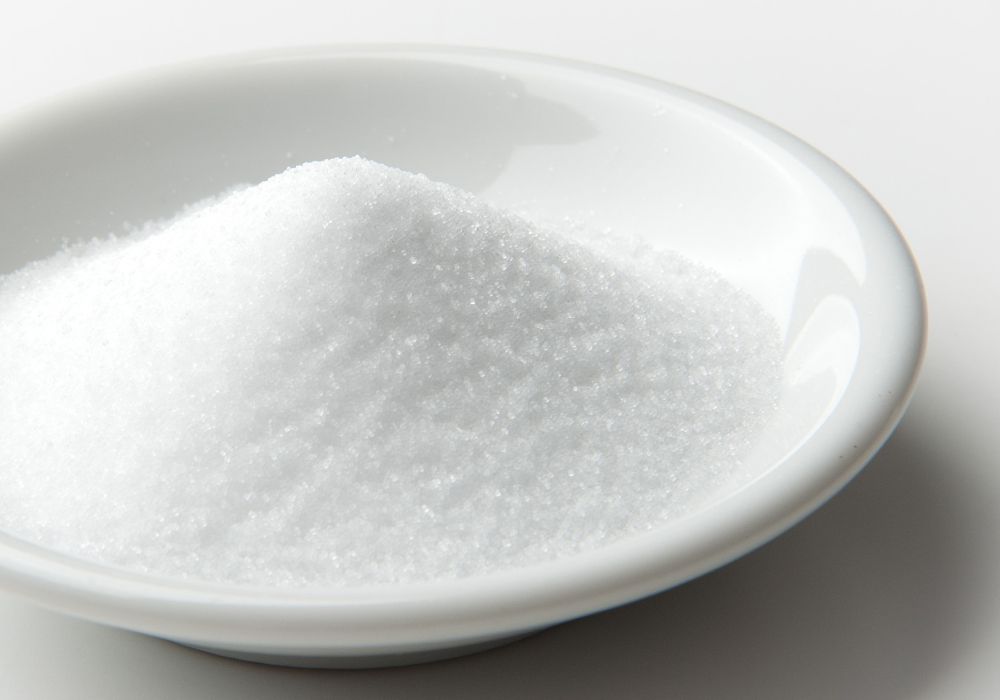
- Salt
- We use Japanese sea salt so as bring out the flavors of the other ingredients.This also gives the noodles a polished look after boiling.
Professional
Inaniwa Udon is made with the utmost care and
craftmanship over the course of 4 days
Udon is typically produced in 3 days, however we believe that adding one day to the process maxims the noodles flavor and texture. Inaniwa Udon is made entirely by hand without the use of machines. Taking extra time to mature the noodles creates a smooth and silky texture which produces a pleasant “nodogoshi” (sensation when swallowing). The nodogoshi of Inaniwa Udon is highly regarded among Japanese gourmands.
- DAY1
- We prepare a mixture of salt water and after letting it rest for 24 hours, add it to the flour and mix. Then we knead the dough until it becomes a ball. After leaving the dough to rest for one hour, the mixture is kneaded again. This second kneading helps mature the dough. Once the kneading is finished, the dough is placed in a wooden crate left to sit overnight from 5 pm to 5 am the next morning.
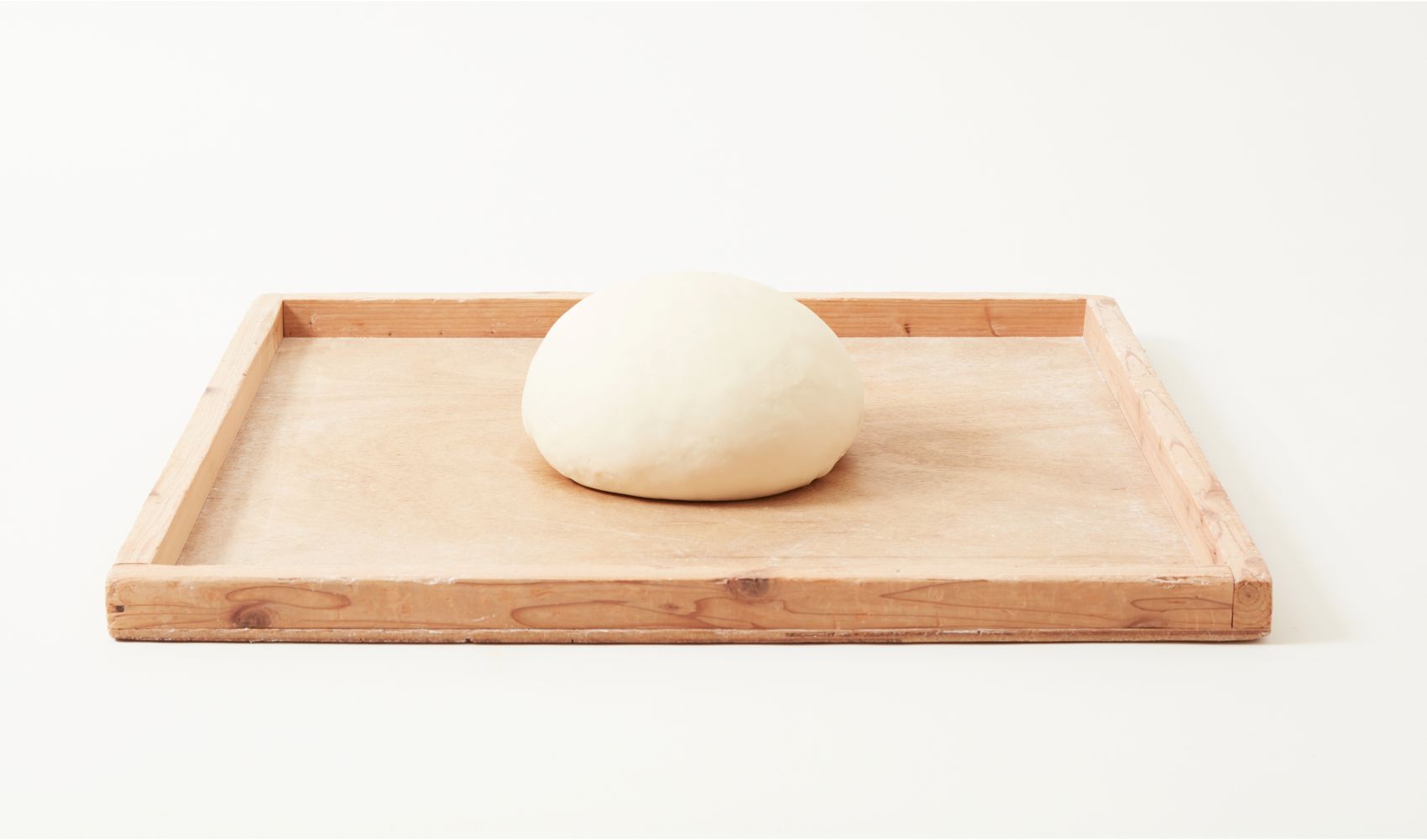
- DAY2
- With the dough now matured, it is placed on a table , flattened with a stick, and then cut to a width of about 3 centimeters. Each piece is dusted with four and rolled out by hand to produce a long string. Although some hand-rolled noodles are coated with cooking oil to assist with production, Inaniwa Udon does not use any oil in our manufacturing process. Once the long strings are rolled out, they are placed in a container left to mature until the next morning.
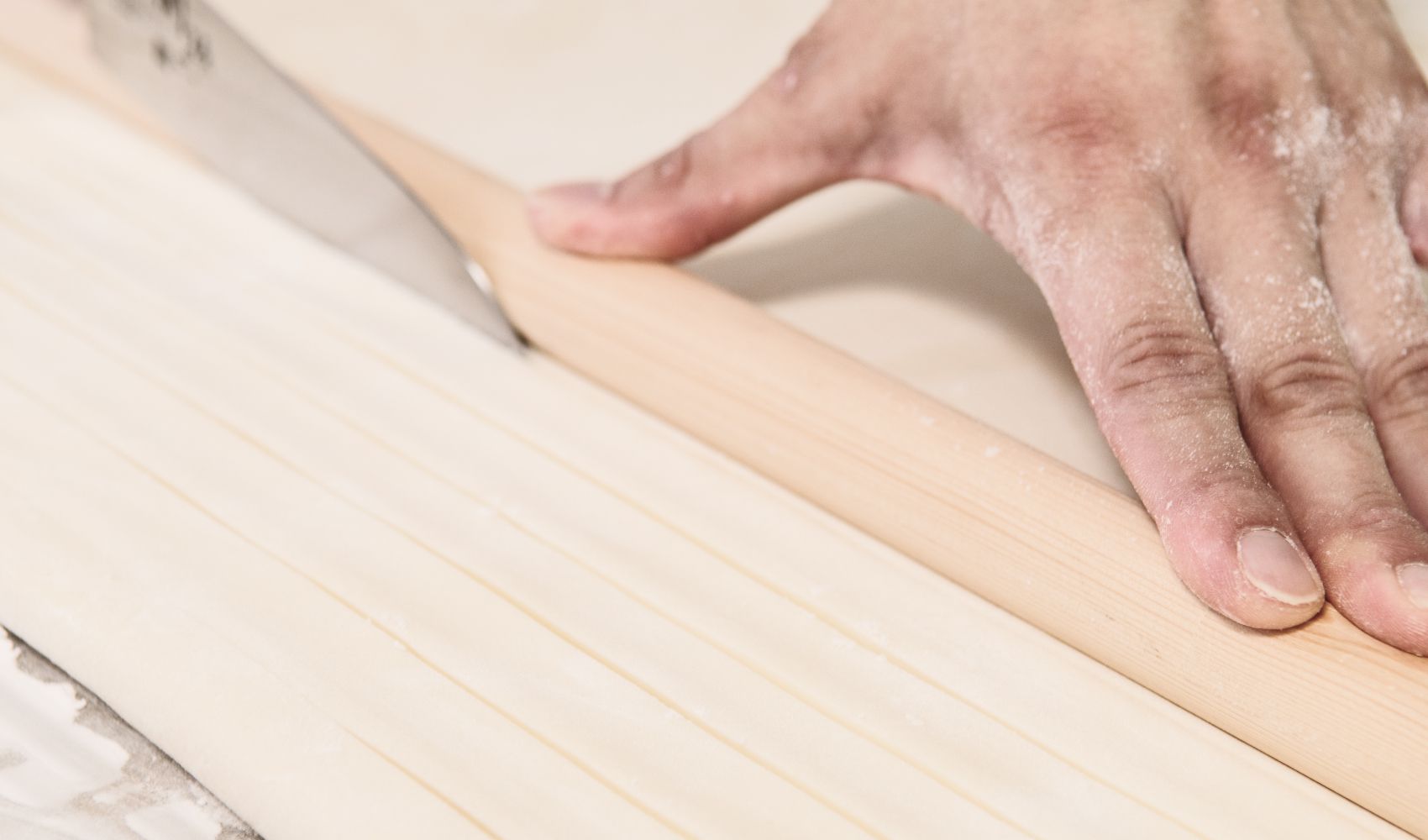
- DAY3
- Now that the long string of dough has matured overnight, it is ready to be made into more uniform noodles. The long strung is weaved along two parallel sticks and left to sit for a while. The noodles are then laid a table, dusted with flour, slightly stretched and then flattened with a stick. After that, they are left to sit once again. The noodles are then hung out on a special rod like a curtain. Here, the noodles are rolled out again without using any oil or other additives. After this, the craftsman in charge must consider the temperature and the maturity of the noodles when deciding the timing of the next steps in the process. For this reason, quality control specialists are assigned to monitor and report on each batch of noodles.
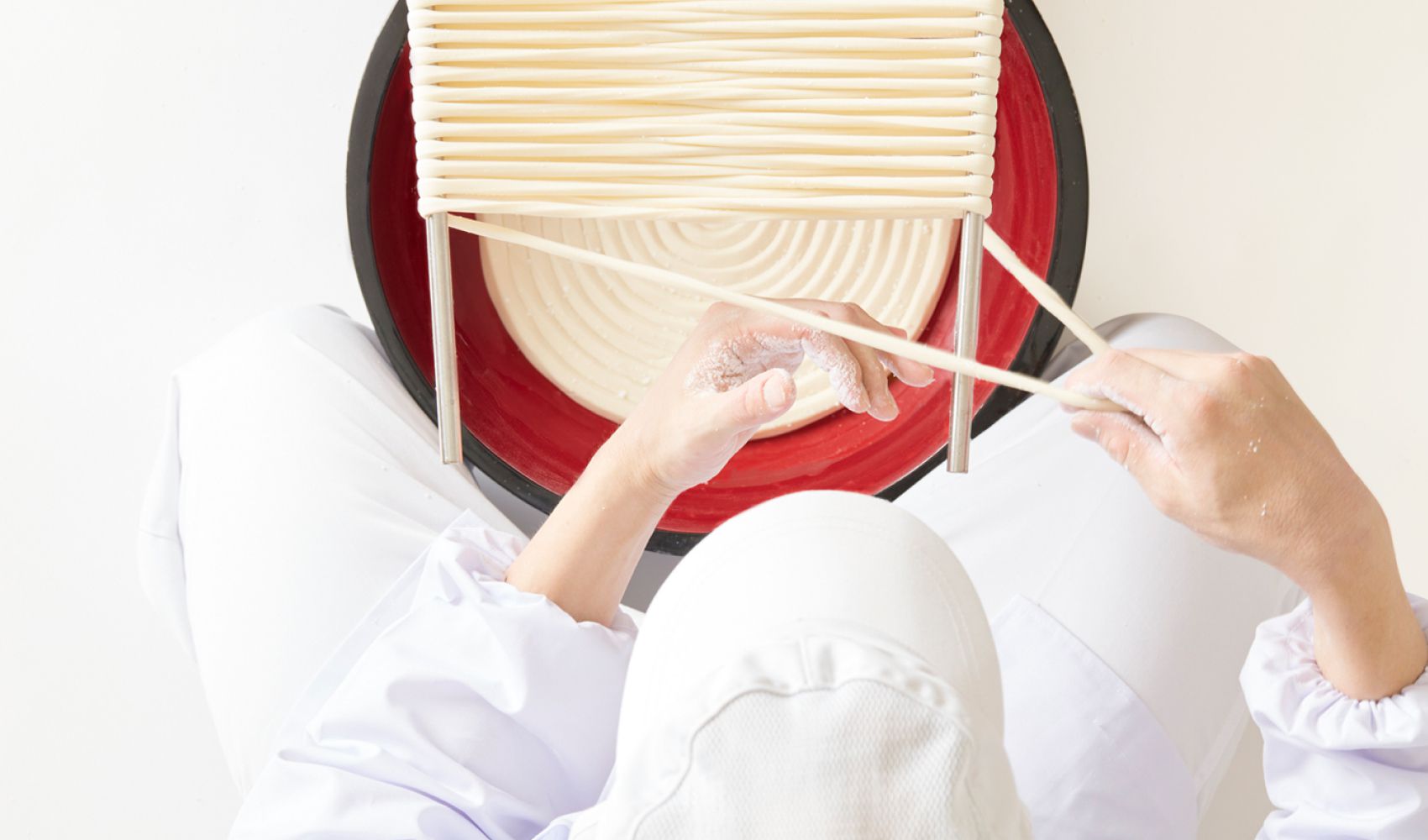
- DAY4
- On the fourth day, the noodles are put in the drying room, where they begin to produce a pleasant aroma. A ceiling fan helps circulate air and remove evaporated water from the room. This maintains the necessary temperature and humidity in the drying room. At the end of the drying process, the noodles are removed by hand, not machines. It requires a high level of craftsmanship to remove the dried udon from the hanging rod. The wrong amount of force will break the noodles. Once they are removed, the noodles are cut to a uniform length using a special cutting machine.
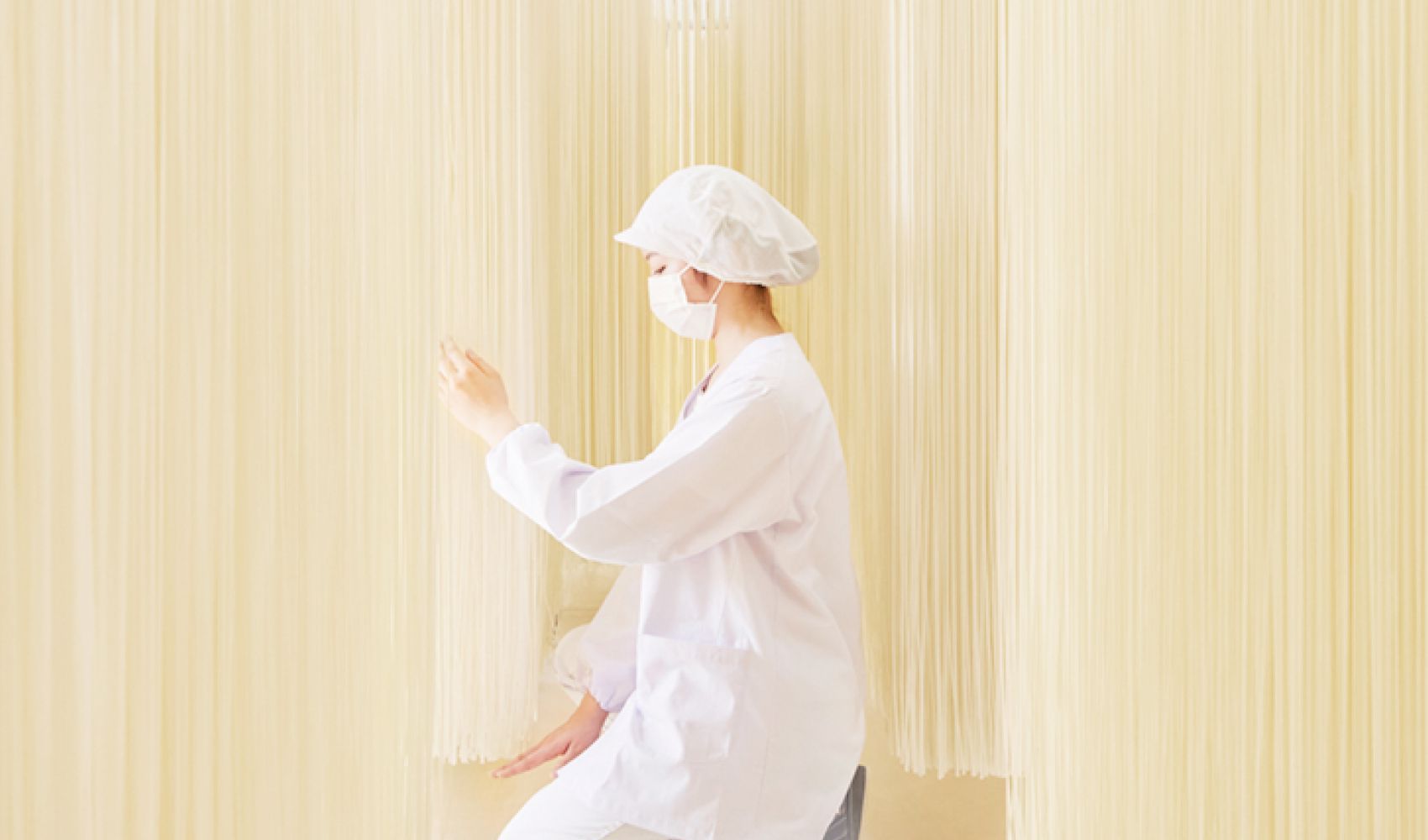
- We take hygiene very seriously
at Inaniwa Udon - After cutting, the noodles are sorted. The noodles are weighed and bagged, then pass through a metal detector to check for foreign objects. The final product is then inspected by hand. We are constantly working to maintain the highest standards of cleanliness and safety.

How to enjoy Inaniwa Udon
1 Boil water
Prepare 1 liter of water for each 80-100 grams of noodles. Wait for the water to boil.
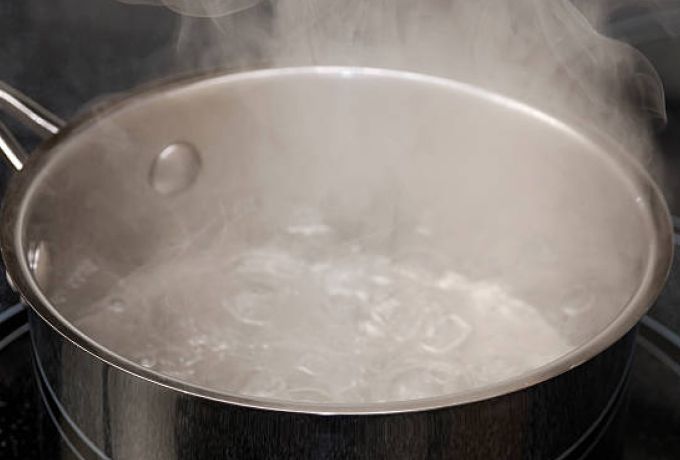
2 Put the noodles in the water
Gently place the noodles in boiling water.

3 Stir the noodles
Use chopstick or tongs to gently stir the noodles in a figure-eight pattern to prevent them from sticking as they cook.
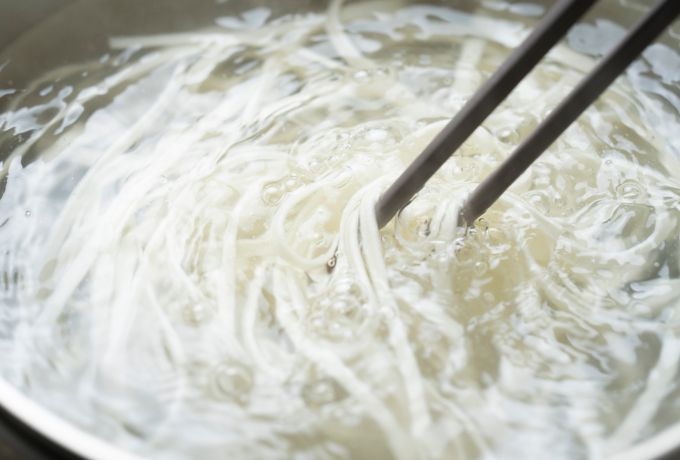
4 Check the color of the noodles
Boil until the noodles turn milky white.
*Adjust the cooking time according to your texture preference. Cook longer for softer noodles or reduce the time for harder noodles.
< Estimated time >
Udon : 3 minutes / Hiymugi : 2 minutes
Somen : 90 seconds / Noodle Porridge : 4-5 minutes
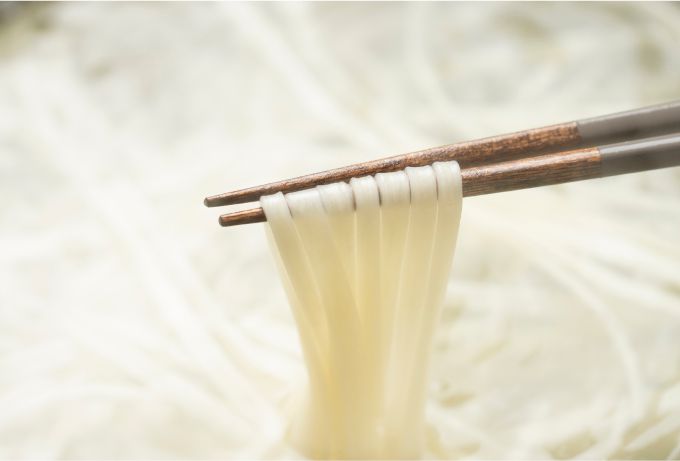
5 Rinse with cold water
Once the noodles have been boiled, immediately move them to a colander and rinse thoroughly with cold water to prevent overcooking.
*For warm noodles, rinse once with boiling water before adding them to the soup.
*For cold noodles, place the noodles in a bowl of ice water after rinsing. This will bring out even more flavor.
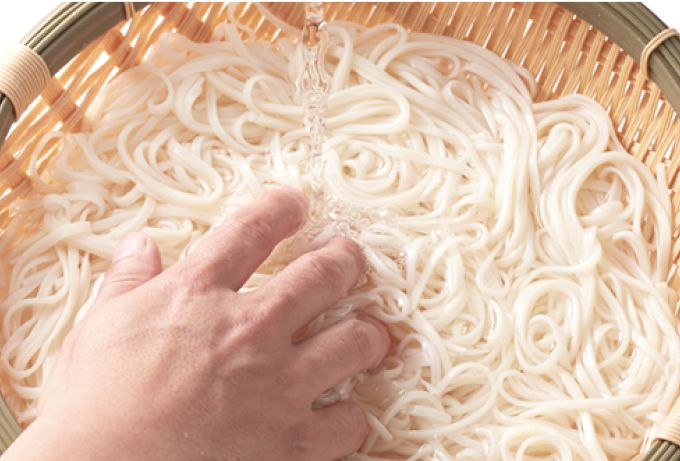
6 Serve
Enjoy the noodles with your favorite soup.
When plating cold noodles, we recommend placing several small servings on a large plate.
